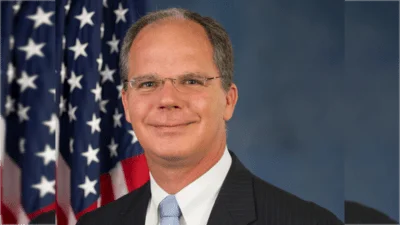WASHINGTON - Ways and Means Committee Ranking Member Sander Levin (D-MI) today is giving a comprehensive speech on trade at the Peterson Institute for International Economics, available in PDF form here. The speech is available on livestream.
Full text of the speech is below and is available online :
We have a lot to talk about today.
The Administration is engaged in negotiations that go far beyond our nation’s vast expanses, Atlantic and Pacific, as well as our northern and southern borders. This demonstrates vividly that globalization is here to stay.
Today, Japan joins negotiations to establish a Trans-Pacific Partnership Agreement that would cover 40 percent of world GDP and about one-third of total world trade. Earlier this month, the United States and the EU began negotiating a Transatlantic Agreement that would cover nearly half of world GDP and about 30 percent of global trade. In Geneva, the United States is playing a leadership role in negotiations to establish a Trade in Services Agreement with over 20 nations, with more likely to join in the future, and it is negotiating a customs facilitation agreement and an information technology agreement.
This surge of trade negotiations is sparking intensified calls for granting Trade Promotion Authority.
On a substantial number of the issues in these negotiations there is likely to be relatively easy, broad-based bipartisan agreement. There continues to be a strong internationalist current with roots going back many decades among Democrats, and a pro-trade orientation embraced by Republicans despite some occasional, strong “nationalist" echoes.
As economic globalization mushroomed, there were several sources of growing differences. Sometimes they involved a clash of different interests. But increasingly they reflected a broader dynamic. The approach to international economic issues increasingly reflected approaches to domestic economic issues. While there was a common belief in the vital role of the operation of free market forces, there were differences of magnitude as to how much markets should be left alone, or regulated.
For those who believe domestically “less is better," we have seen a strong tendency to describe expanded international trade as invariably “win-win." Supporters of this approach were less prone to support strong enforcement, anti-dumping rules, believing instead that distortions in markets were best left alone to work themselves out.
On the other hand, for those more inclined to consider steps to shape market operations domestically, they were more inclined to address steps against market distortions in the international sector, including in considering trade agreements. Supporters of this approach have taken the lead in trying to shift the equation that has dominated discussions of trade as “free trade" versus “protectionism" to one of “free trade" versus “free and fair trade."
While not the only factor, these different perspectives clearly affected what approach in the 80’s to take toward Japanese mercantilism and the dramatic increase in the exports of its manufacturing products shipped from its closed market to the completely open American one; whether to have a hands-on or a hands-off reaction There never was a clear, effective U.S. Governmental program or policy on this issue, one that dominated trade debate more than a decade as the American manufacturing sector was badly battered as a result.
By the early 90s the debate over a role for labor and environmental standards displaced trade with Japan on the trade center stage in the U.S. The dispute over NAFTA reflected a globalizing economy, bringing more head-to-head competition between neighboring nations at very different levels of development with vastly different labor and environmental conditions. While there was a tendency to frame the battle only as a clash between American business and American labor unions, such framing missed a larger difference over whether market forces in the international market place needed to be shaped by building international basic worker and environmental standards into trade agreements.
The Clinton Administration, which had proceeded without enforceable standards in NAFTA, began to shift to a policy -- as President Clinton stated at University of Chicago -- to assure that trade “lift everybody up, not pull everybody down." There followed an agreement with Jordan that included enforceable international labor and environmental standards. Then an agreement with Cambodia to provide more access to the American apparel market as an incentive for adopting international worker rights. The rationale was that such standards would have a mutual benefit -- for the developing nations that needed economic development and workers who needed a decent wage and for the U.S., whose workers who did not want to compete with those unable to raise their wages and whose American companies needed a growing middle class in other nations to buy their products.
The battle over the role of labor and environmental standards intensified during the Bush Administration, which rejected the insertion of enforceable worker and environmental standards in trade agreements, substituting in agreements simply that nations “must enforce their own laws", whatever they were. One argument often offered in support of that approach was that the market would be self-correcting in terms of higher standards as a nation developed.
Time after time, despite recommendations from the ITC, the Bush Administration refused to use the 421 provision to protect against import surges from China, a provision that was inserted during the politically hard-fought battle over China PNTR. That repeated refusal seemed hard to explain, but for doctrine opposed to market interventions.
When Democrats gained the majority in the House in 2007, we insisted that trade agreements negotiated by the Bush Administration be redone, as embodied in the May 10 Agreement that for the first time incorporated fully enforceable labor and environmental obligations in their text and that addressed how to find a balance in the marketplace between protection of intellectual property rights in medicines and access to them in developing nations.
Describing the recent tragedies in Bangladesh, reporters on the ground have written graphic reports on the horrendous conditions in the workplace. Those reports raise vividly the issue whether, as globalization expands, market forces alone will simply correct themselves. A Wall Street Journal editorial suggested this answer: “Once countries like Bangladesh can export garments more easily (by cutting textile tariffs to zero), they will progress through this stage of industrialization faster."
But I believe that events in Bangladesh represent an undeniable challenge to this approach in design of international trade policy today. And the Obama Administration has had a different answer - it has suspended Bangladesh’s trade preferences under the Generalized System of Preferences and paired this with an action plan addressing worker safety and rights that, if acted upon, will result in reinstatement of GSP to Bangladesh. There is emerging a shift in the paradigm - basic standards are being built in; it is not simply a matter of racing to produce where it is (temporarily) the cheapest and where labor and environmental standards are their lowest.
Impacted by different perspectives, including often those relating to domestic economic issues, I know that there will be no easy answer. But Bangladesh raises for the status quo the need to go beyond, hopefully with good will, conventional responses as globalization changes the world of trade.
TPP
TPP provides immense opportunities for and also major challenges to trade policy. There is no question about its importance. With 11 - soon to be 12 - Pacific Rim countries at the table, TPP is expected to cover 40% of world GDP and about 1/3 of total world trade. U.S. dairy producers, for example, see in TPP an opportunity to remove Canadian tariffs in the range of 250-300% and nontariff barriers, which have survived two previous U.S.-Canada trade agreements. U.S. auto producers see an opportunity to remove Malaysian tariffs of up to 35% and nontariff measures that significantly raise the cost of importing American cars. And U.S. credit card companies see an opportunity to eliminate a range of barriers to the provision of payment services, from policies promoting domestic monopolies to forced localization.
In addition to removing barriers for U.S. exporters, TPP provides an opportunity to, in essence, update NAFTA and other outdated FTAs by incorporating the enforceable international labor and environmental obligations and the provisions on medicines in the May 10 agreement.
As I pointed out in Singapore at the launch of TPP negotiations, Vietnam presents some particular challenges as a longstanding command economy with a poor record on all facets of individual rights. TPP is an opportunity to implement hard-fought improvements in trade policy and to address how to create a level playing field with an economy built substantially on state-owned enterprises.
Today, Japan joins the TPP negotiations. The size of its economy presents important opportunities to increase the flow of trade in major fields. It is also urged that it can provide additional leverage to the Japanese government to implement announced “Abenomics" to bring about long overdue structural reforms to open up highly closed markets.
The largest closed Japanese market is automotive. Our largest trade deficit, after China, is with Japan ($76 billion last year). Autos account for two-thirds of that massive and persistent deficit. Japan’s economic difficulties in recent decades overshadowed trade issues and made it difficult to address them. In fact, the auto deficit is larger today than it was in the 1980s. And imports -- from all countries combined -- account for a total of just 6 percent of the Japanese auto market, making Japan the most closed automotive market in the developed world. Having this lock on the third largest auto market in the world has given, and continues to give, Japanese producers major economies of scale and major advantages to compete in America and all other markets. Consequently, Japan produces twice as many automobiles as it consumes (10 million to 5 million).
Because of its size, in addition to other areas like insurance and agriculture, Japan automotive issues in TPP present another challenge to policy makers.
Every Administration since the Reagan Administration has acknowledged that the Japanese automotive market -- vehicles and parts -- has been rigorously closed. As was indicated to me by one within the Reagan Administration, that Administration’s strong inclination was to be skeptical of the economic benefits of efforts to intervene in the marketplace to try to turn one-way trade into two-way trade. Like all subsequent Administrations thereafter, all entered into some form of understanding with Japan to open their automotive structures, but all these partial agreements failed.
Japan’s longstanding, much larger, rigidly controlled automotive market, vehicles and parts, presents a clear challenge today as to how serious we are about two way trade.
Unfortunately, I don’t believe the package the Administration announced in April will likely lead to significant two-way automotive trade. Under that package, the fate of U.S. auto tariffs is not tied to reciprocal opening of Japan’s market. Instead it depends on what negotiators negotiate on other product lines.
Moreover, the April terms ignore the most commercially significant and long-standing nontariff barrier our exporters face in Japan: Japan’s long history of manipulating its currency.
Today I am releasing a proposal that would assure a more open Japanese market and a more reciprocal relationship. The proposal has three parts.
First, the elimination of the U.S. tariff should be tied to the opening of the Japanese auto market, not to whatever the tariff phase-out schedule may be for rice in Japan or shrimp in Brunei. We should eliminate the tariff sooner if Japan opens; we should eliminate the tariff later if Japan remains closed. Some have suggested this is “managed trade" - it is not; it is an antidote to address generations of managed trade.
Second, we need an enforceable obligation to avoid manipulating exchange rates. The IMF already prohibits currency manipulation and has done quite a bit to define what actions constitute currency manipulation. The problem is that the IMF lacks an enforcement mechanism. We need to take the disciplines that have been developed at the IMF, build upon them, and subject those disciplines to binding dispute settlement - more or less the same dispute settlement mechanism that applies to the other obligations in the agreement.
Finally, this proposal addresses not only the long list of current non-tariff barriers in Japan, but also addresses barriers that come up in the future. A tariff “snap-back" doesn’t address the problem; it only requires a country to move from one barrier to the next to avoid the snap back.
We need to face forthrightly in trade policy that two-way trade needs to replace one-way trade.
TTIP
I support the Trans-Atlantic negotiations because they provide a rare opportunity to build upon what is already the largest economic relationship in the world, accounting for about $2.7 billion in goods and services traded each day.
Just as important, an effective transatlantic agreement would help to establish new rules and a new framework for global trade, promoting an equitable and market-based economic model. That model can serve as a viable alternative to the disturbing trend emerging in some countries toward tighter state control over trade flows and larger support for state-owned and state-controlled enterprises, which disadvantages U.S. businesses. Those rules should address critical 21st century issues, such as, for example, ensuring that state-owned enterprises are not granted unfair advantages over private enterprises; that worker rights are respected and the environment is protected; and that intellectual property rights are protected; and that exchange rates are not manipulated to gain unfair advantages in trade.
None of this will be easy. The list of transatlantic trade issues over the years is a long one. Our relationship with Europe is unlike any other. The TTIP should build upon the strength of that relationship and should reflect our many common objectives and values - while respecting our differences and being sensitive to those differences unless they are a cover for narrow special interests standing in the way of an agreement that unites us.
Trade Promotion Authority
I support legislation that strengthens the role of Congress in trade negotiations on the front end (through clear negotiating objectives and congressional consultation requirements), in exchange for an expedited “up or down" vote on a trade agreement on the back end. The purpose is to maximize our nation’s role and leverage in trade negotiations while preserving the primacy of Congress over U.S. trade policy under the Constitution.
Two issues will need to be carefully addressed.
First, TPA sets the ground rules for engagement between Congress and the Administration on trade negotiations. Today, trade agreements address a broad range of policy areas. Given the importance of the agreements, and their potential impact, Congress must play a greater role in their development. That means improving access to negotiating information and putting in place mechanisms to ensure meaningful consultations.
Consulting more closely with Congress could help to build broader bipartisan support for trade. There needs to be a more open, and a much deeper, discussion about the basic perspectives that impact decisions on trade policy. More regularized involvement and consultation perhaps can be an instrument to create more common ground and more action in concert. Members themselves need to talk directly to our negotiators - and to each other - about these issues.
On vital trade issues, those automatically saying ‘yes’ or those automatically saying ‘no’ will not be able to develop a sound trade policy in a rapidly globalizing world.
Second, the TPA process allows for the crafting of a broader strategy - as we did in 1988 - to tackle the challenges of globalization and enhance U.S. competitiveness. Since we last considered TPA, the United States has experienced the largest trade deficits in our history, contributing to lost jobs and a weak economy.
Currency manipulation is a vivid example. The House and Senate have both passed currency legislation. There is strong precedent for pairing TPA with currency legislation. We did so with the very first TPA bill in 1974, and we did it again in the 1988 Act.
But many other ideas should be discussed and acted upon. Trade adjustment assistance needs to be renewed, and trade enforcement is critical. We should establish new mechanisms to ensure that Customs is enforcing laws against unfairly traded imports. We should codify and strengthen the Interagency Trade Enforcement Center that the President created by executive order. We should consider tax incentives, and should discuss competitiveness measures with other Committees. For example, we should reauthorize the Export-Import Bank, and ensure that it has all of the tools it needs to counter more robust export financing programs by countries like China.
Businesses want that, labor wants that, the Obama Administration wants it, and Democrats and Republicans want it too.
* * *
Unfortunately, the TPA debate more than a decade ago was characterized by bitter partisanship that then carried over for years into many subsequent trade debates in the House. I hope we will do better this time around. We need to avoid choosing up sides, avoid rushing to completion. If we do it right, the substance can drive us to a consensus that meets the needs of U.S. workers, businesses, farmers and ranchers, and recognizes the realities of globalization.









